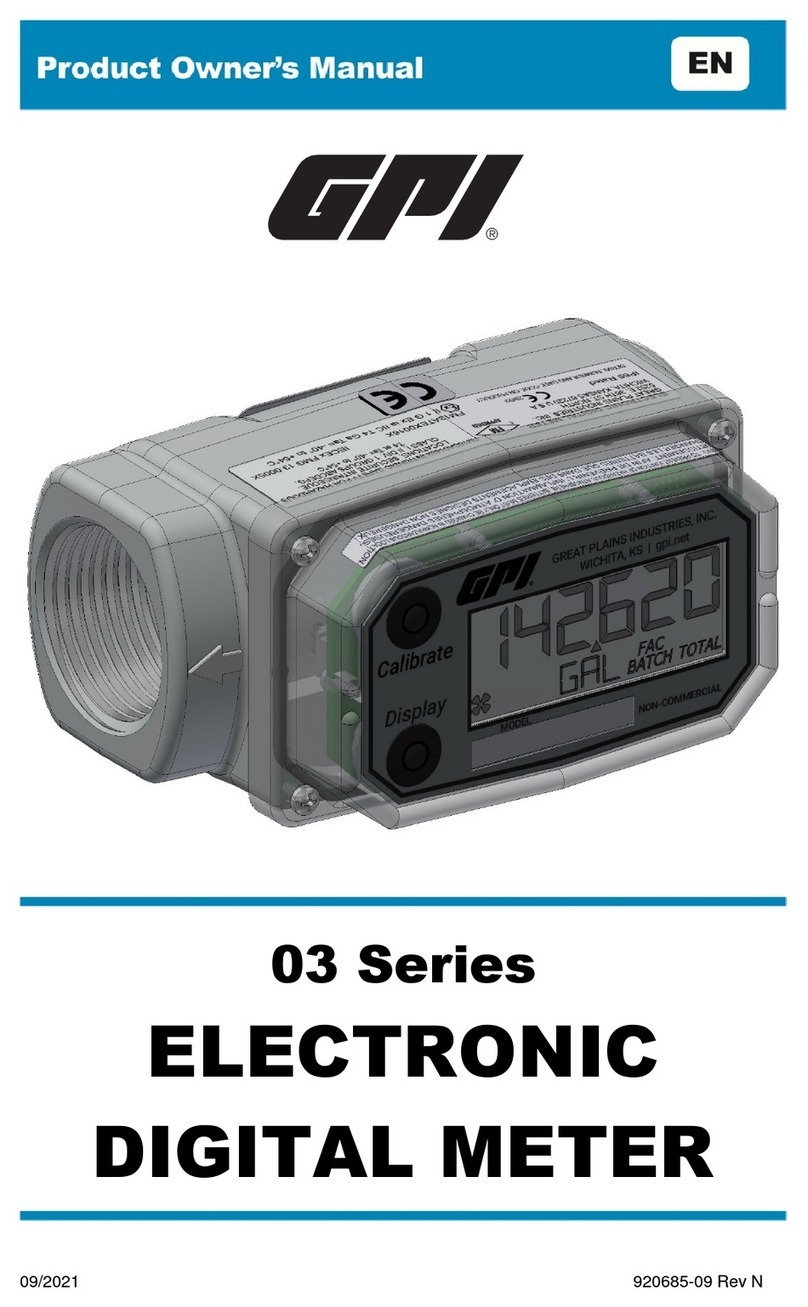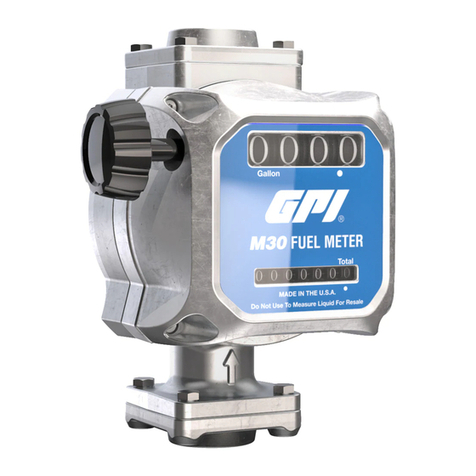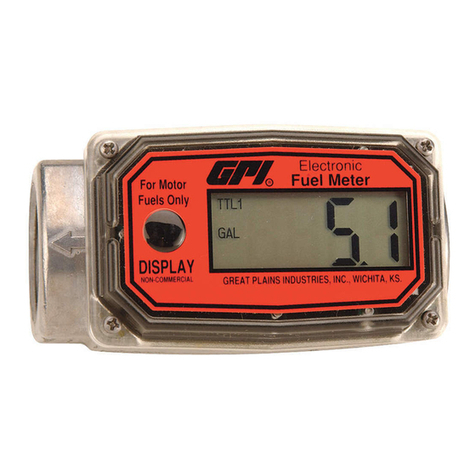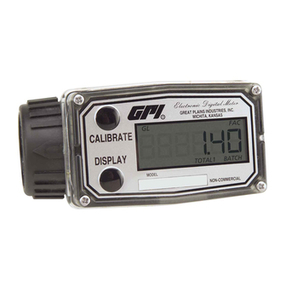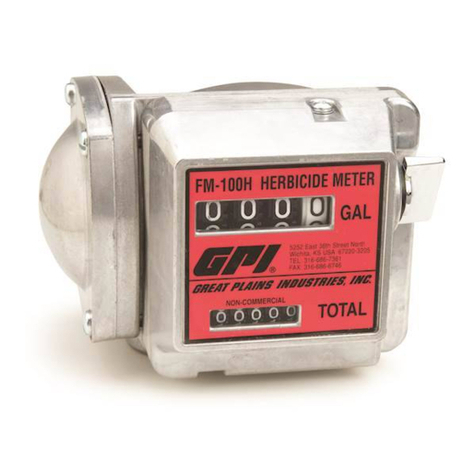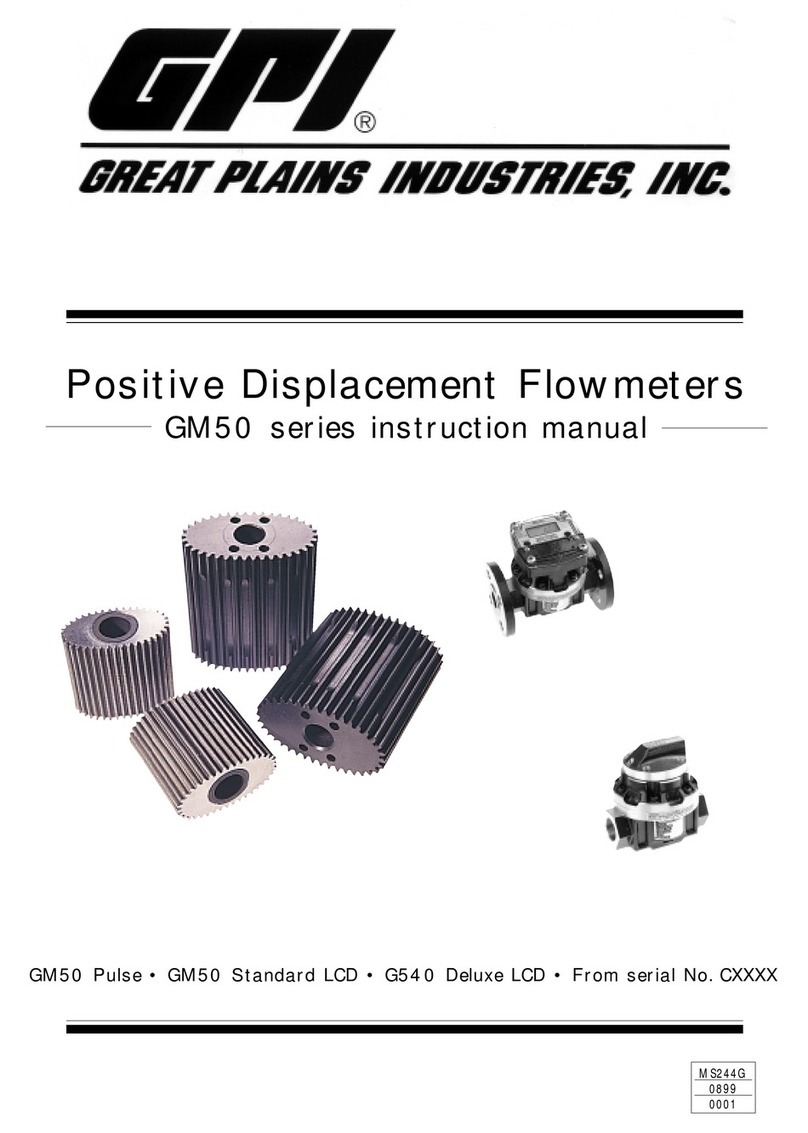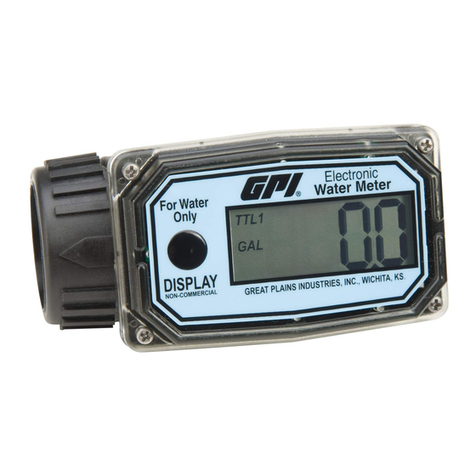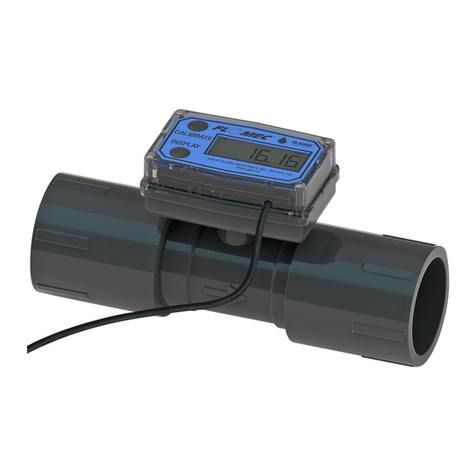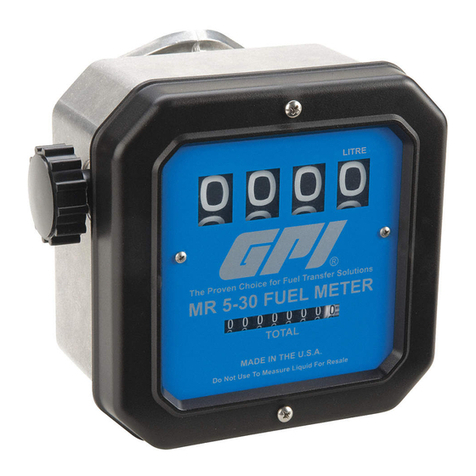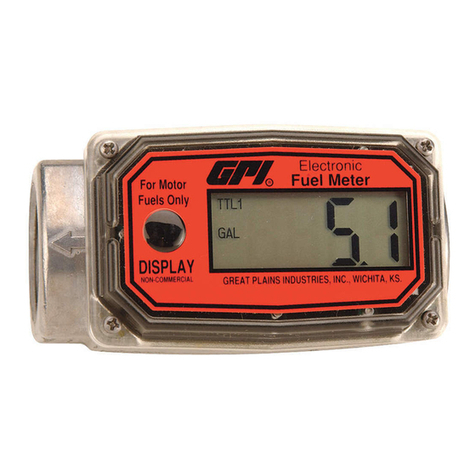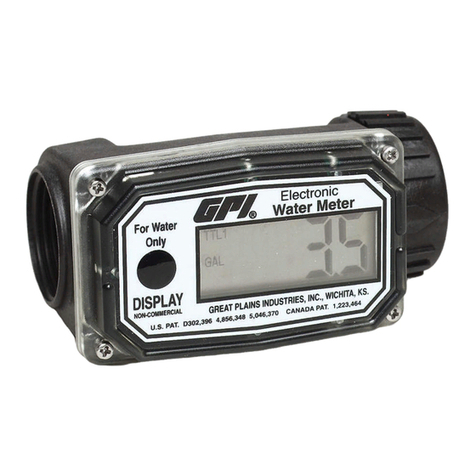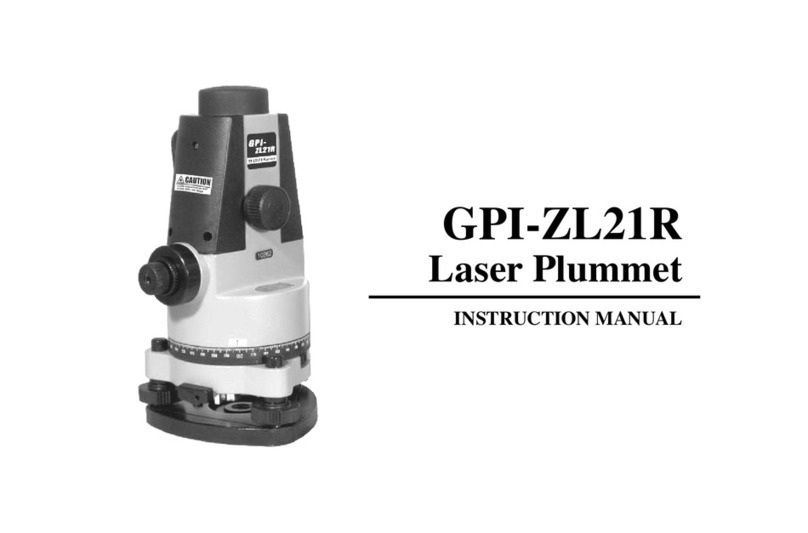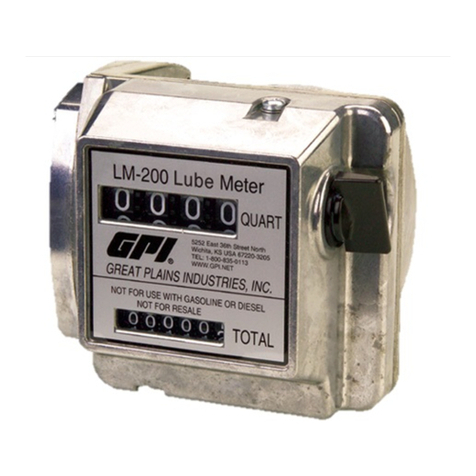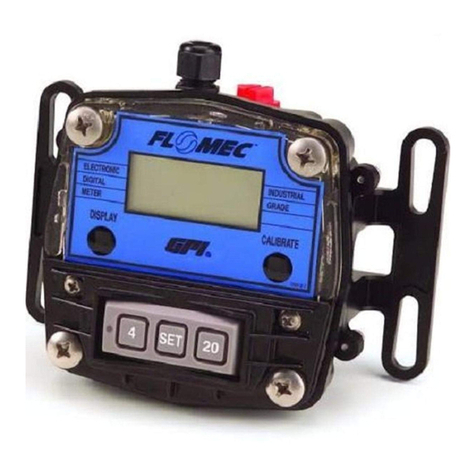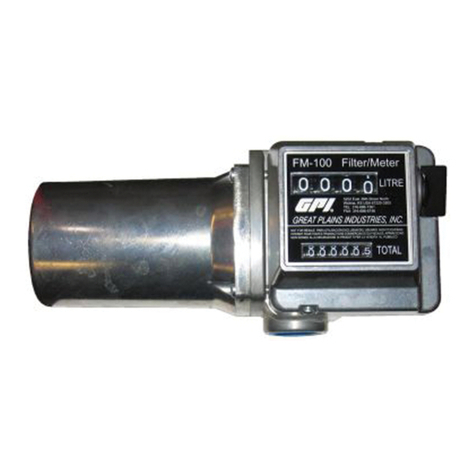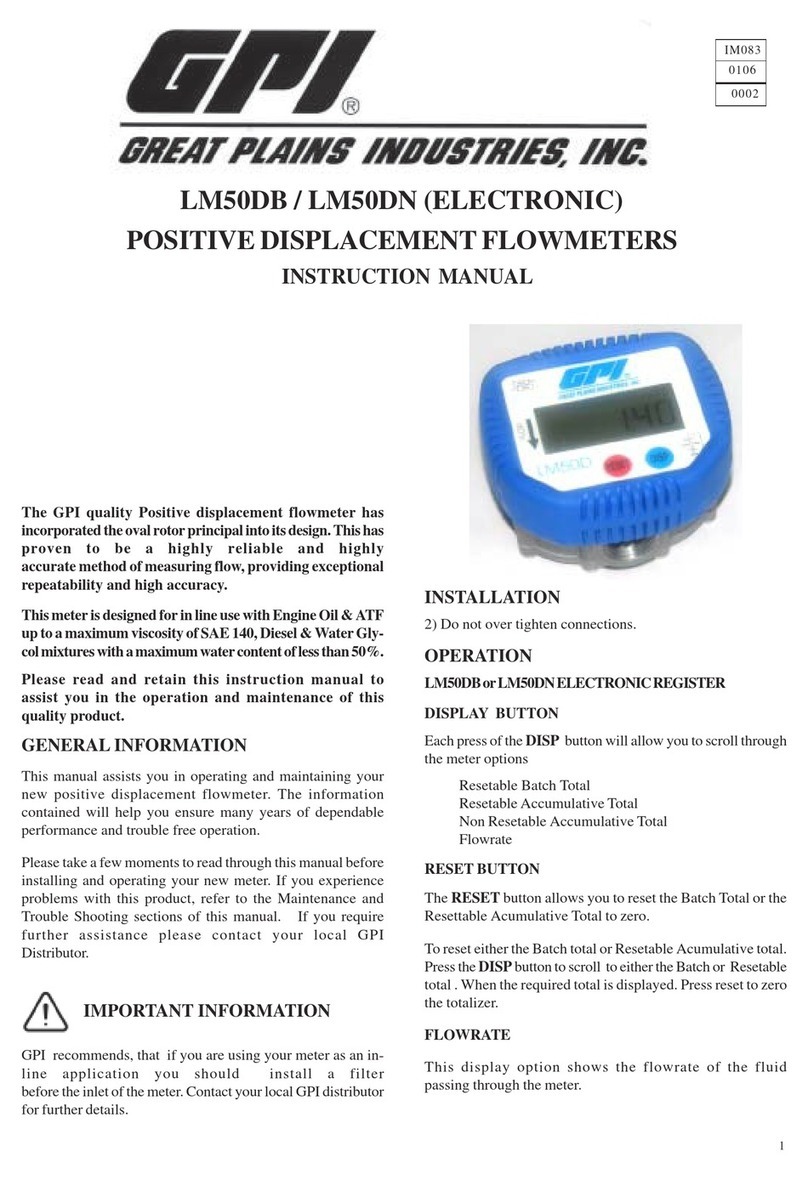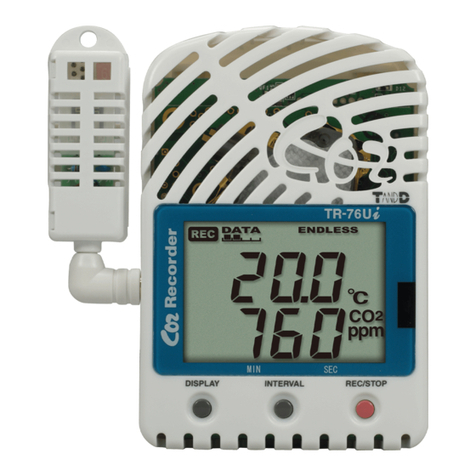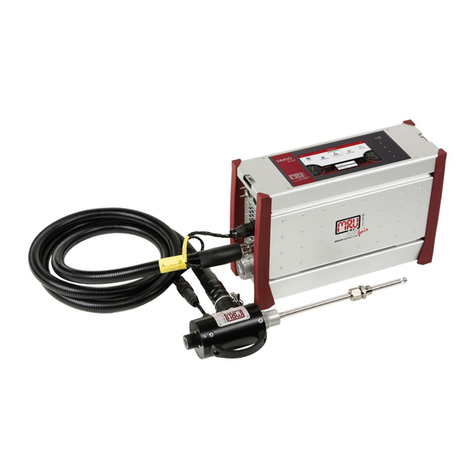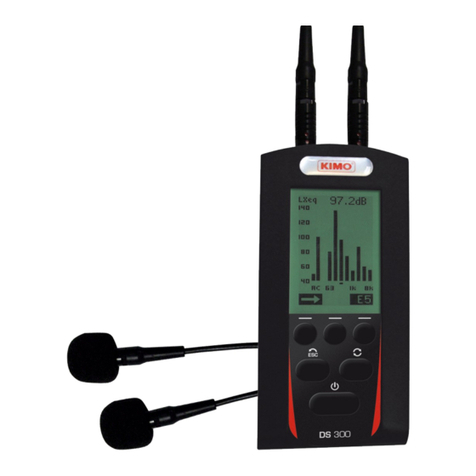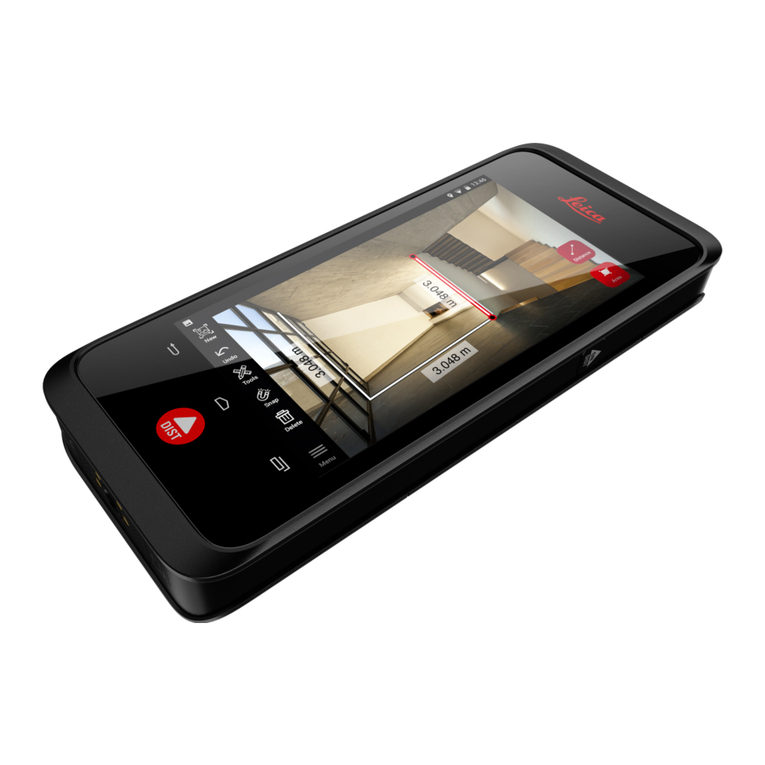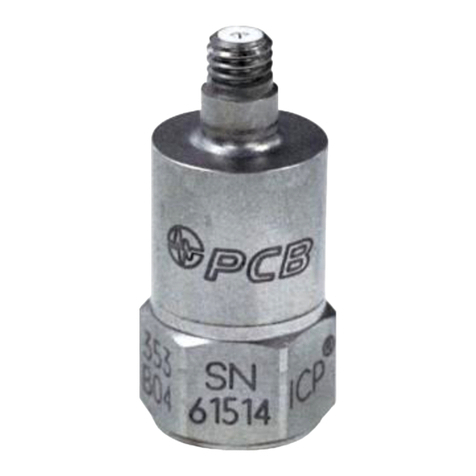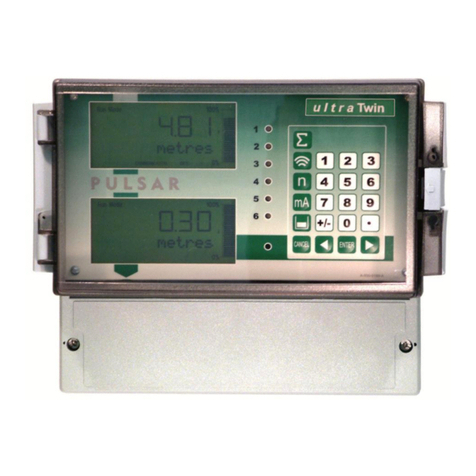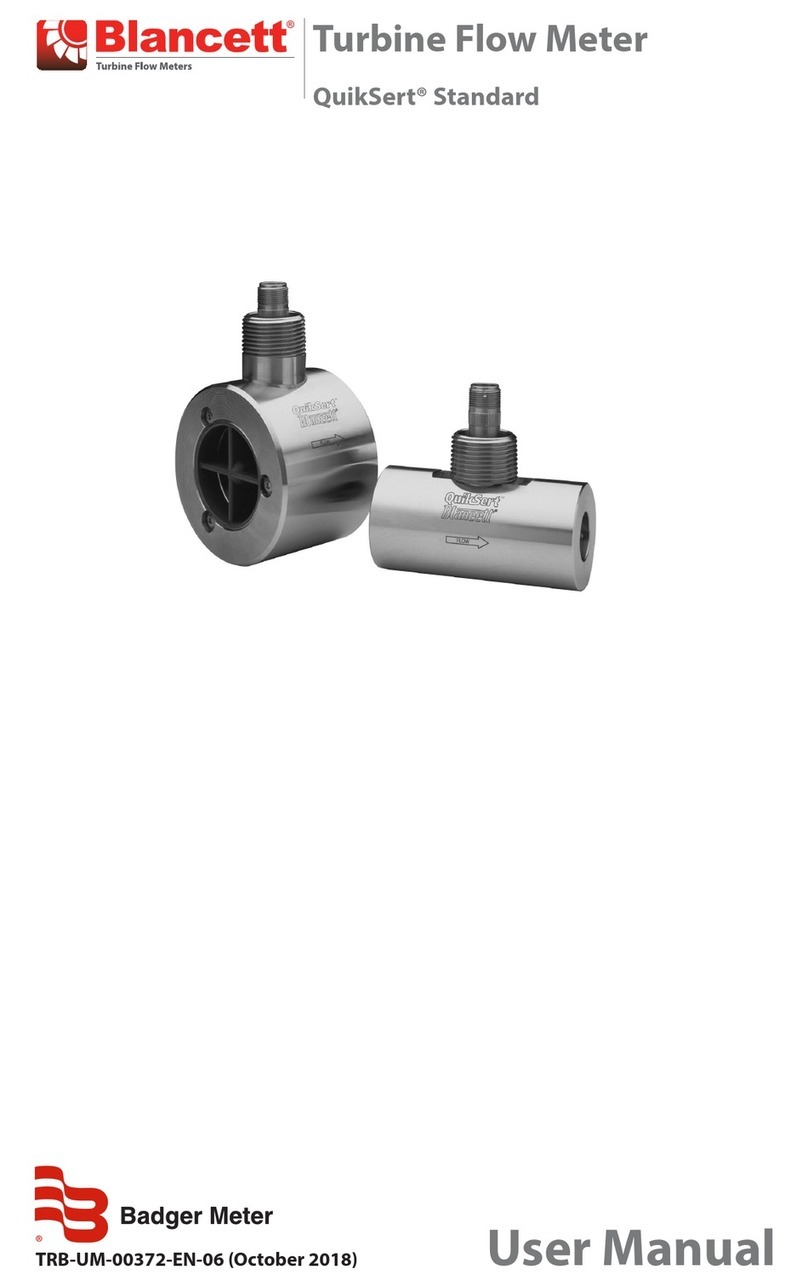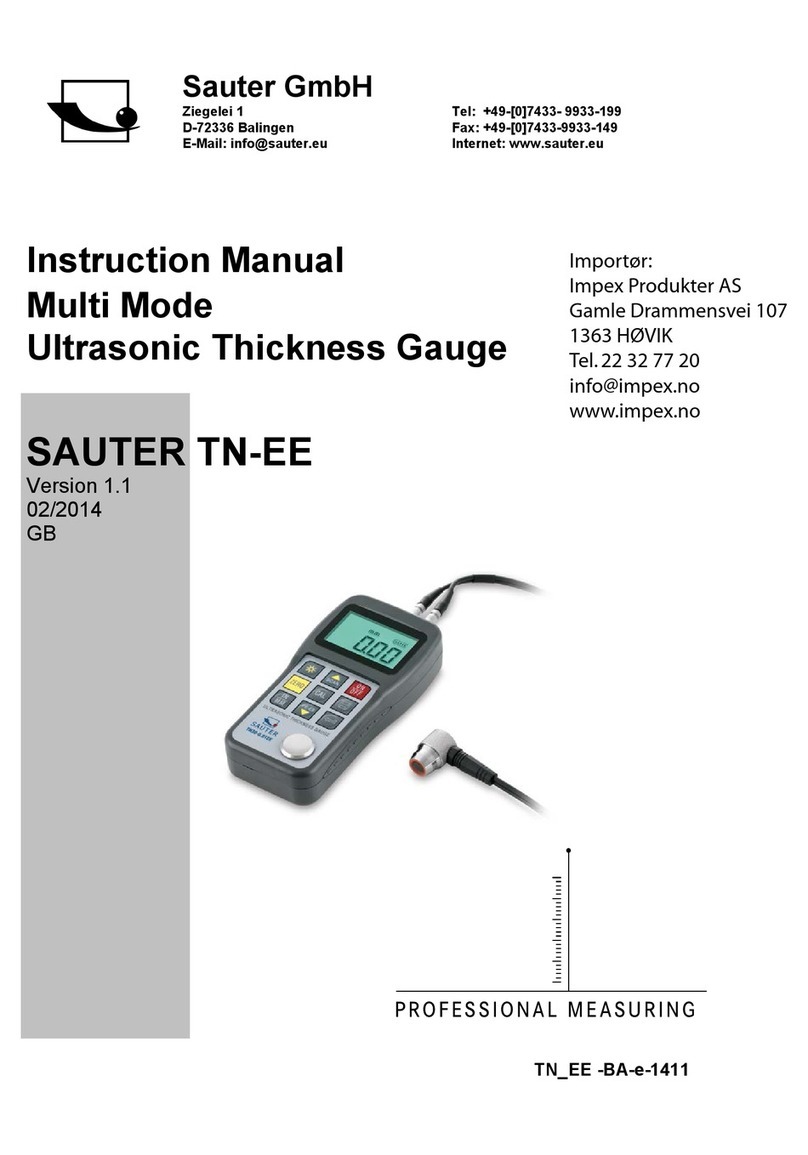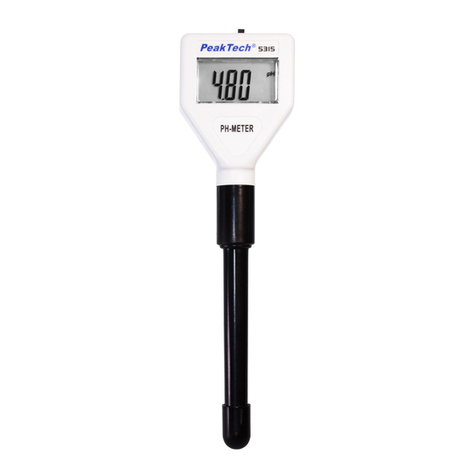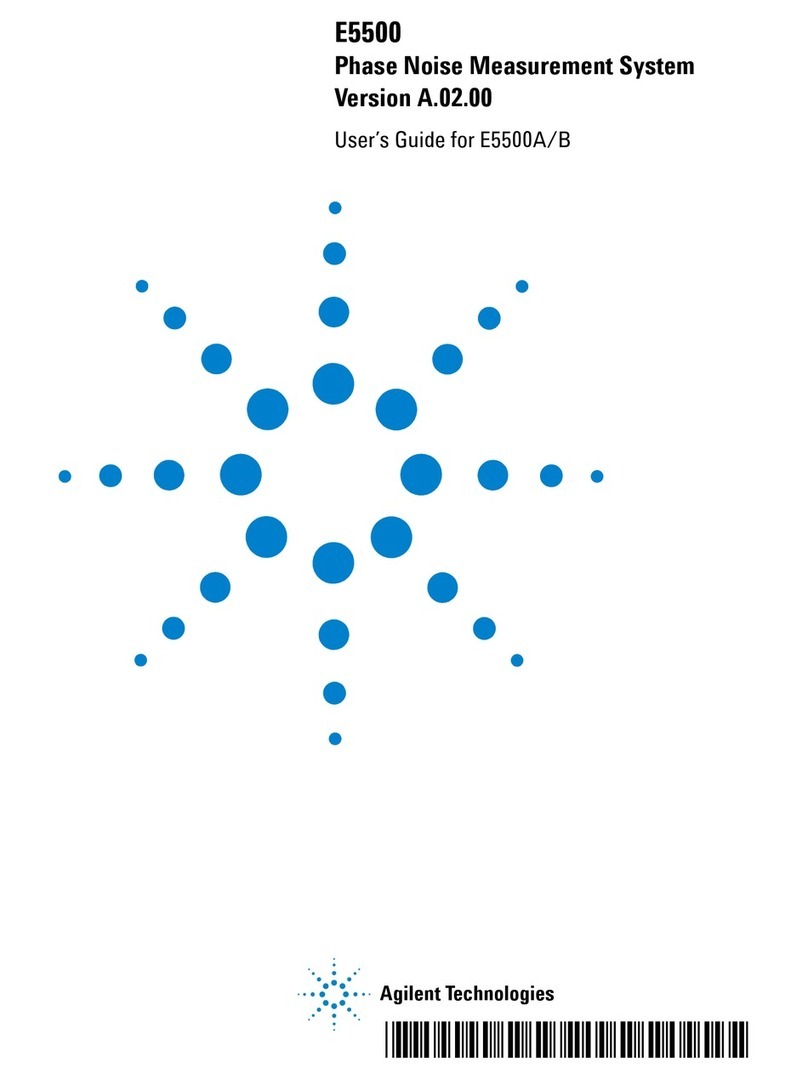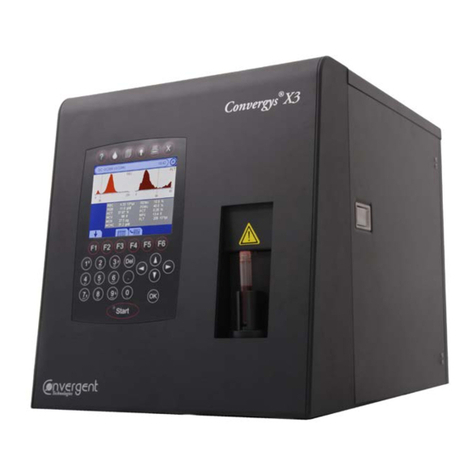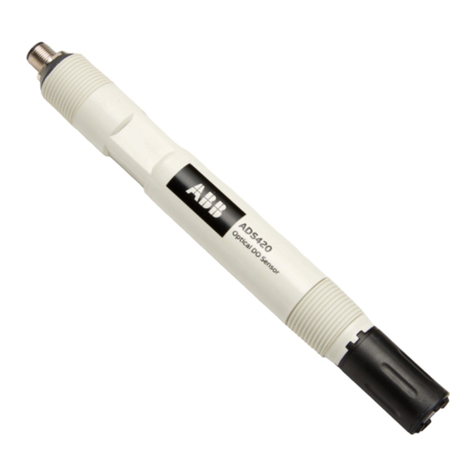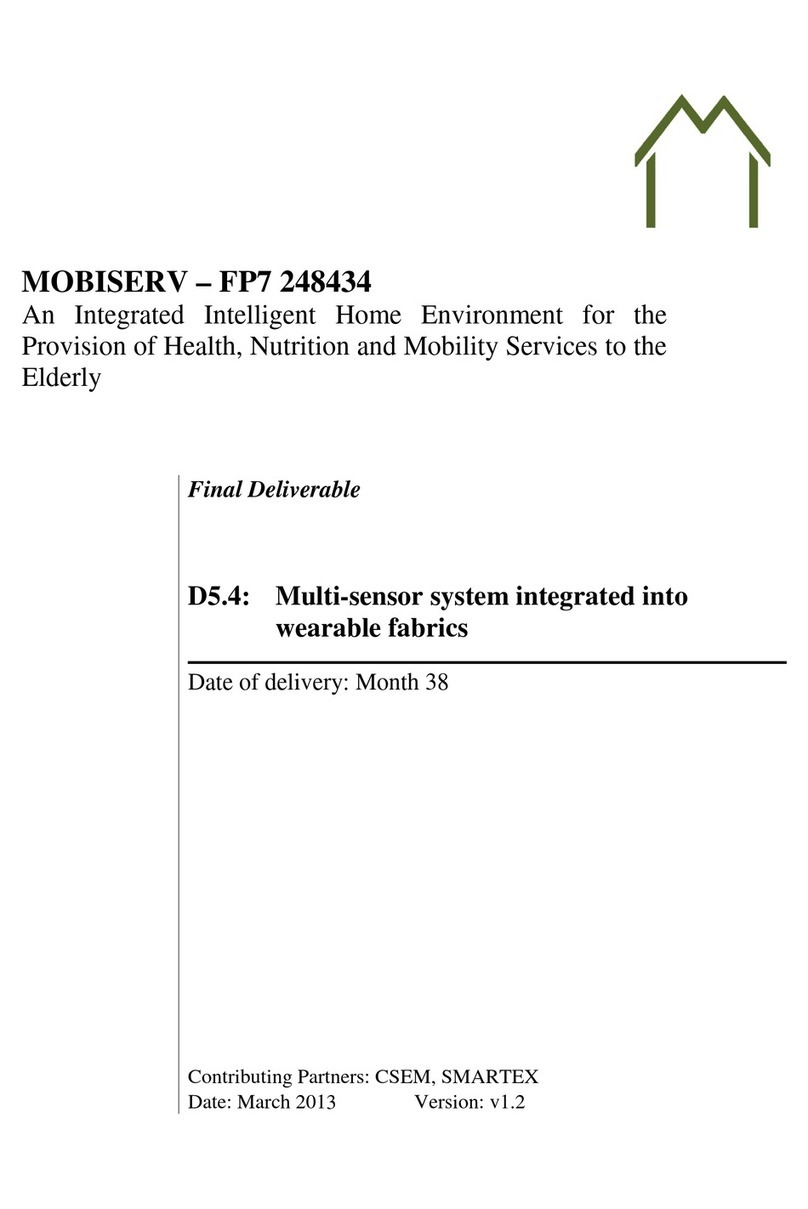GPI GM005 User manual

MS345G
0603
0005
Positive Displacement Flowmeters
GM005 series instruction manual
GM005 Pulse Meter From serial No. CXXXX

PLEASE READ THIS INFORMATION
CAREFULLY BEFORE USE!
Before use, confirm the fluid to be used
is compatible with the meter. Refer to
industry fluid compatibility charts or
consult your local representative for
advice.
To prevent damage from dirt or foreign
matter it is recommended that a Y or
Basket type 60 mesh strainer be
installed as close as possible to the
inlet side of the meter. Contact your
local representative for advice.
Note: When a strainer is installed it
should be regularly inspected and
cleaned. Failure to keep the strainer
clean will dramatically effect flow
meter performance.
Note: To prevent damage caused by air
purge slowly fill the meter with fluid.
To reduce pressure build up turn off the
pump at the end of each day.
Maintenance can be carried out to the
liquid crystal displays and pulse units
without removing or isolating the meter
from the line. When maintenance to
any other part of the meter is required,
the meter must be isolated and the line
pressure reduced.
The reed switch pulse unit can cause
inaccurate rate counts when used with
high speed counters. It is advised that a
debounce circuit be used. Contact your
meter distributor for further
information.
When fluid passes through the meter
the rotors turn, as shown below. The
magnets which are located in the rotors
will pass across the pulser circuit board
(containing either Reed switches or
Hall Effect sensors). A signal is
generated which is then sent by the
Pulse Circuit Board (PCB) to the
relevant LC display or receiving
instrument.
Operating Principle
Please take a few minutes to read
through this manual before installing
and operating your meter. Always
retain this manual for future reference.
If you have any problems with the
meter, refer to the maintenance and
trouble shooting sections of this
manual.
This manual contains connection and
operating instructions for the GM005
Series meters with Pulse outputs. For
models with an Liquid Crystal Display
an additional instruction manual is
supplied. If you need further assistance,
contact your local representative or
distributor for advice.
This Flow Meter has incorporated the
oval rotor principal into its design. This
has proven to be a reliable and highly
accurate method of measuring flow.
Exceptional repeatability and high
accuracy over a wide range of fluid
viscosities and flow rates are features of
the oval rotor design. With low
pressure drop and high pressure rating
oval rotor flow meters are suitable for
both gravity and pump (in line)
applications.
Flow meters are available in either
Aluminium or 316 Stainless Steel.
Standard rotors are made from PPS
(Polyphenylene Sulfide Resins) with
optional 316 Stainless Steel rotors
available for both Stainless steel and
Aluminium models.
GM005 Series Meters are available
with either;
* Pulse output
* Standard LC Display and Pulse
1
To the owner
Important Information

1] it is recommended that when setting
up pipework for meter installations a
bypass line be included in the design.
This provides the facility for a meter
to be removed for maintenace
without interrupting production. (See
Fig.1)
2] Use thread sealant on all pipe
threads.
3] For pump applications ensure pipe
work has the appropriate working
pressure rating to match the pressure
output of the pump. See Meter
Specifications section for further
details.
4] Install a wire mesh strainer (Y or
basket type 60 mesh as close as
possible to the inlet side of the meter.
5] Ensure that the meter is installed so
that the flow of the liquid is in the
direction of the arrows embossed on
the meter body.
6] The meter can be installed in any
orientation as long as the meter shafts
are in a horizontal plane. (Refer to
Fig.2 for correct installation) The
register assembly may be orientated
to suit the individual installation.
Note: Incorrect installation can cause
premature wear of meter components.
7] Do not over tighten meter
connections.
8] It is important that after initial
installation you fill the line slowly,
high speed air purge could cause
damage to the rotors.
9] Test the system for leaks.
10] Check the strainer for swarf or
foreign material, after the first 200
litres check periodically,
particularly if the flow rate
decreases.
2
Installation
1
2
Bypass Line
Flow Outlet
Flow Inlet
Strainer
Do Not Install Meter This Way
Electrical Connections
Contact rating 15VA
Maximum Voltage 150VDC
Note: Double rate pulse output not available 34
Reed/Hall combination
1 - Reed Switch
2 - Reed Switch
3 - HE Common -
4 - HE Signal
5 - HE Supply +
Hall/Hall Combination
1 - HE1 Supply +
2 - HE1 Signal
3 - HE Common -
4 - HE2 Signal
5 - HE Ground
Hall Effect Voltage 4.5 to 24 VDC
Current Draw Minimum 4.6mA
Output NPN Open Collector 25mA
Reed Switch Connections Hall Effect or Reed/Hall Sensor Connections

Disassembly
Ensure that the fluid supply to the
meter is disconnected, and the line
pressure is released before
disassembly, with the exception for
repair or maintenance to the LC
Display or PCB where there is no
necessity to isolate the meter from flow.
Refer to the exploded parts diagram on
subsequent pages for item numbers.
1a] Pulse Caps models: Undo the
conduit connector, remove pulse
cap (item 9) and remove the wires
from the pulse terminal board (item 5).
1b] Standard LC Display: Mark the
display orientation with a marking
pen, unscrew the four large screws
(Item 26) on top of the LC Display.
Carefully separate the LC Display
from the plastic housing and
disconnect the wires from the
pulse terminal block. (Refer to
additional Standard LC Display
instruction manual).
2] Remove the mounting adaptor plate
and gasket (Item 14).
3] Loosen the cap head screws (Item 7)
that hold down the meter cap (Item
4), remove the screws, washers and
lift off the cap.
4] Remove the o’ring (Item 2) from the o’ring
groove in the meter cap (Item 4).
5] Remove rotors (Item 3).
Reassembly
1] Before reassembling check the
condition of the rotors (replace if
necessary).
2] Check that the smooth side of the
rotors (not the plug side) is facing
you when inserting the rotors, the
smooth side of the rotor is the
magnet side. There is no difference
between rotor one or rotor two.
3] Replace the rotors (Item 3) onto the
shafts at 90oto each other (refer Fig.
5) and check their operation by
turning either of the rotors. If the
rotors are not in mesh correctly or
do not move freely, remove one of
the rotors and replace correctly at
90oto the other rotor. Re-check the
operation of the rotors.
4] Replace the o’ring (Item 2) into
groove in the meter cap, if the o’ring
has grown or is damaged in any way
replace it with a new part.
5] Replace the meter cap making sure
that the locating pin in the body
lines up with the hole in the meter
cap. Insert the cap head screws
(Item 7) and tighten in a diagonal
sequence 1, 3, 2, 4, etc.
6] The replacement of cables and
connectors are a reversal of the
disassembly procedure, replace
conduit fitting if required. When
replaceing the Standard LC Display,
confirm the orientation marks made
on disassembly are aligned then
screw the register into place.
7] Test the meter by turning the rotors
with a finger or by applying very low
air pressure (no more than a good
breath) to one end of the meter,
before returning the meter to the line.
Pulse Circuit Board (PCB) Notes:
The pulse PCB (Item 5) is fitted with (A)
two reed switches; (B) hall effect
sensors; or (C) one reed switch and one
hall effect sensor. The PCB board is
fastened to the meter cap (Item 4) by
two screws and stand off’s. All care and
caution should be taken when
removing or handling the PCB as both
the reed switch and hall effect sensor
are fragile.
Reed switch or hall effect sensors are
not available as individual replacement
parts and are only available with the
complete PCB (Item 5).
3
Service Instructions
5
Rotors must be at 90oto each other.
Rotor #2
Rotor #1

4
Meter Parts Listing
1 1 MS298B Meter Body 1/2” BSP (Aluminium)
1 1 MS298N Meter Body 1/2” NPT (Aluminium)
1 1 MS337B Meter Body 1/2” BSP (Stainless Steel)
1 1 MS337N Meter Body 1/2” NPT (Stainless Steel)
21uBS145S “O” Ring (NBR)
21uBS145TES “O” Ring (Teflon)
21uBS145VS “O” Ring (Viton)
32uMS342S Rotors PPS (Polyphenylene Sulfide Resins)
32
uuMS342-1S Rotors (Stainless Steel)
32uMS342HS High Viscosity Rotors (PPS)
32uMS342-1HS High Viscosity Rotors (Stainless Steel)
4 1 MS297 Meter Cap (Aluminium)
4 1 MS338 Meter Cap (Stainless Steel)
51uMS344-RS PCB (Standard Reed Switch)
51uMS344-HES PCB (Hall Effect Sensor)
5 1 MS344-R/HES PCB ( 1 Reed Switch & 1 Hall Effect Sensor)
6 2 MS284S PCB Board Screws
74uMS346S Meter Cap Screws (Standard)
74uMS350S Meter Cap Screws (Stainless Steel)
81uMS340S Pulser Cap Gasket
9 1 MS296 Pulser Cap (Aluminium) 20mm Conduit Thread
9 1 MS296N Pulser Cap (Aluminum) 1/2” NPT Thread
9 1 MS339 Pulser Cap (Stainless Steel) 20mm Conduit Thread
9 1 MS339N Pulser Cap (Stainless Steel) 1/2” NPT Thread
10 2 MS347S Pulser Cap Screw (Stainless Steel)
11 1 MS37 Warning Label (Not Shown)
13 1 Customer to Specify Legend Plate (Not Shown) inc. Hammer Screws
Item
No.
No.
Off.
Part or Set
(Order from this column only) Part Description
Key:
uIndicates recommended Spare Parts to stock
Bold text indicates Stainless Steel Model Parts
Rec.
Parts

Pulse
1 to 30/ 0.26 to 8
3 to 25/ 0.8 to 6.60
+/- 0.5%
1000 Centipoise
5500kPa/ 800 PSI/ 55 BAR
80°C/ 176°F
(S.S. Models 120°C/ 248°F)
Dual Reed Switches or Hall
Effect Sensor or combination
HE Sensor/Reed Switch**
112 / 224
* Unless High Viscosity Rotors are fitted.
5
Meter Specifications
Meter Type
Flow Ranges
Litres/minute - US Gall/min
Above 5 Centipoise
Below 5 Centipoise
Accuracy of Reading
Maximum Viscosity*
Max. Operating Pressure
Max. Operating Temp.
Pulse Type
Pulses Per Litre/US Gallon
Meter Trouble Shooting
TROUBLE
Fluid will not flow through meter
Reduced flow through the meter
Meter reading inaccurate
Meter not giving a pulse signal
CAUSE
a] Foreign matter blocking rotors
b] Line strainer blocked
c] Damaged rotors
d] Meter connections over tightened
e] Fluid is too viscous
a] Strainer is partially blocked
b] Fluid is too viscous
a] Fluid flow rate is too high or too low
b] Fluid is too viscous
c] Excess wear caused by incorrect
installation
a] Faulty hall effect sensor
b] Faulty reed switch
c] Magnets failed
REMEDY
a] Dismantle meter, clean rotors
(Strainer must be fitted in line)
b] Clean strainer
c] Replace rotors (Strainer must be
fitted in line)
d] Re-adjust connections
e] See specifications for maximum
viscosity
a] Clean strainer
b] See specifications for maximum
viscosity
a] See specifications for minimum and
maximum flow rates
b] Bleed air from system
c] Check meter body and rotors.
Replace as required. Refer to
installation instructions
a] Replace PCB Board
b] Replace PCB Board
c] Replace magnets

Warranty
Meter Dimensions
96mm
70mm
100mm
105mm
18mm 20mm
Pulse Meter Dimensions
Great Plains Industries, Inc. Limited Warranty Policy
Great Plains Industries, Inc., 5252 East 36th Street North, Wichita, Kansas USA 67220-3205, hereby provides a limited one year warranty against defects in material and
workmanship on all products manufactured by Great Plains Industries, Inc. This warranty shall extend to the purchaser of this product and to any person to whom such
product is transferred during the warranty period.
The warranty period shall begin on the date of the original new equipment purchase. Warrantor’s obligation hereunder shall be limited to repairing defective workmanship or
replacing or repairing any defective part or parts. This warranty shall not apply if:
a.)The product has been altered or modified outside the warrantor’s duly appointed representative;
b.)The product has been subjected to neglect, misuse, abuse or damage or has been installed or operated other than in accordance with the manufacturer’s operating
instructions.
To make a claim against this warranty, notice of claim must be given in writing to the company at its address below no later than 30 days after the expiration of the warranty
period. Such notice shall identify the defect in the product. The company shall, within 14 days of receipt of such notice, notify the customer to either send the product,
transportation prepaid, to the company at its office in Wichita, Kansas, or to a duly authorized service center. The company shall perform all obligations imposed on it by the
terms of this warranty within 60 days of receipt of the defective product.
GREAT PLAINS INDUSTRIES, INC. EXCLUDES LIABILITY UNDER THIS WARRANTY FOR DIRECT, INDIRECT, INCIDENTAL AND CONSEQUENTIAL DAMAGES
INCURRED IN THE USE OR LOSS OF USE IF THE PRODUCT WARRANTED HEREUNDER.
The company herewith expressly disclaims any warranty of merchantability or fitness for any particular purpose other than for which it was designed.
This warranty gives you specific rights and you may also have other rights which vary from U.S. state to U.S. state.
NOTE: In compliance with MAGNUSON MOSS CONSUMER WARRANTY ACT - Part 702
(governs the resale availability of the warranty terms).
Table of contents
Other GPI Measuring Instrument manuals
